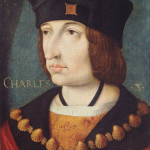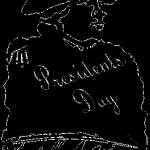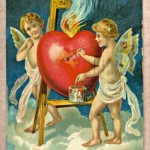The Real History Of The Christmas Holiday
Birth of the Christ Child, Santa Claus, holiday decorations and the smells of the holiday dinner wafting from the kitchen are just some things many people look forward to celebrating during the Christmas season. However, none of these is actually the original history of Christmas. Christmas began long before the birth of Jesus, before St. Nicholas or even Santa riding across the night skies with Rudolph leading the reindeer.
Explore the history of Christmas and discover how the holiday evolved to the modern day celebrations known today.
Ancient Holiday Celebrations
Ancient Romans celebrated their fall harvest and the winter solstice with bountiful food, drink and socializing with family and friends. They usually enjoyed a month-long celebration beginning the week of the winter solstice. Rome honored Saturnalia, their god of agriculture.
The celebrations became so lively that ancient Romans even converted slaves to masters, with peasants in control of Rome. In addition to this celebration, Romans held another celebration and feast called Juvenalia, for children. Children enjoyed a carnival-like celebration during the winter solstice.
Although some sources attribute the Roman celebrations as being the first celebrations of Christmas celebrations as we know them today, one culture celebrated earlier.
The Holiday Spot states that the people of Mesopotamia celebrated for 12 days, honoring Marduk, their chief deity. The Mesopotamians celebrated the Zagmuth New Year’s Festival “before 4000 years.” This celebration is believed to be the origin of the “12 Days of Christmas.” Other European countries also held pagan festivals to celebrate the winter solstice. However, history recognizes the Romans as starting the tradition of exchanging gifts.
Celebrating The Birth Of Jesus
The Church did not make Jesus’ birth a holiday until the fourth century. Although the New Testament tells people of the wonder of the birth of Jesus, there was no celebration after the year of his birth until Pope Julius I designated December 25 as the day to celebrate the birth of Jesus. Pope Julius selected December 25, in spite of the belief that Jesus was actually born during the spring. The Church originally called the December 25 holiday the “Feast of the Nativity.”
After the designation of December 25 to celebrate the birth of Jesus, the custom spread throughout Europe. As the custom spread, both Catholics and non-Catholics celebrated Christmas as the day of Jesus’ birth. However, people in America did not celebrate Christmas until the early 19th century. The tradition spread from churches into homes across the country, evolving over time to the celebrations enjoyed by Americans today.
Christmas And St. Nicholas
St. Nicholas is not a myth, as many people likely believe. Whether he rides across the dark skies delivering gifts around the world is a matter of speculation and personal opinion. However, the real St. Nicholas lived in Greece during the third and fourth centuries. As Bishop of Myra, he defended church doctrine during the “Great Persecution,” according to the National Geographic. Nicholas landed in prison until Constantine brought Christianity to prominence in his empire.
Several miracles are attributed to St. Nicholas. Some countries named St. Nicholas their patron saint. However, modern history considers some miracles to be dubious at best, likely resulting in The Church removing St. Nicholas  Feast Day from the calendar.
Feast Day from the calendar.
So how did St. Nicholas become associated with Christmas? St. Nicholas was the patron saint of children and the poor
. He protected children and gave gifts to the poor. Because of St. Nicholas Day and Christmas Day occurred so close together, the two celebrations were combined into one holiday celebration.
Santa Comes To Commercial Life
Coca-Cola gained a reputation for putting a face on Santa Claus. Considered an elf, which explains the modern reference to Santa as a “Jolly old elf,” Coca-Cola became the first to depict Santa as a man in one of their holiday advertisements in 1931.
The advertisement led to other companies featuring Santa in their advertisements and recognition of Santa Claus as a man dressed in red, with a big belly and glasses. CNN describes how the story of Santa developed even further when Montgomery Ward first featured Rudolph the Red Nosed reindeer in an advertisement.







